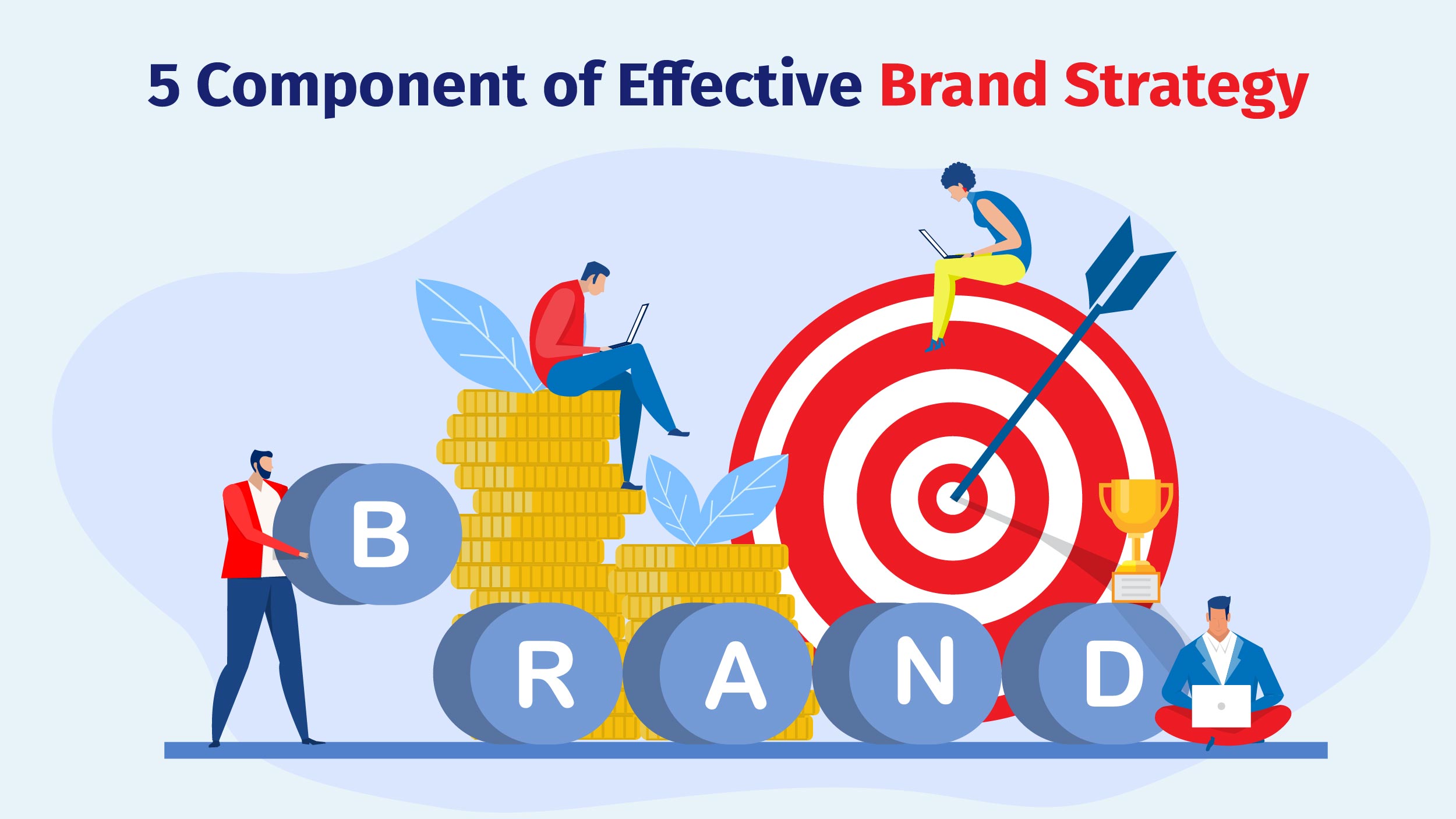Your brand gets just seven seconds to impress someone new – that’s why having a solid brand strategy is crucial.
Branding is all about crafting your brand identity, making you stand out from the competition. To nail an excellent strategy, you need to know your target audience, carefully position your brand, execute your plan well, and keep up with the latest trends in communication.
In this guide, we’ll dive into why branding strategy in marketing matters, what key elements make a brand successful, and how you can create a killer strategy for your business in 2024.
What is Brand Strategy?
A brand strategy is a comprehensive plan that guides how a brand establishes and enhances its recognition and appeal among both existing and potential customers. It involves creating a unified identity for your company that resonates with your target audience across various channels. This helps to establish trust, loyalty, and recognition.
The first step in crafting a good branding strategy is researching the needs and preferences of your target customers. This research is essential for identifying your potential customer base. Trust is a significant factor for over 81% of consumers when considering a purchase, so understanding your audience is crucial.
A branding strategy includes defining key elements such as visuals, brand personas, positioning statements, and messaging. These components work together to convey a consistent brand image and build a loyal customer base.
Why is Brand Strategy Important?
 Developing a branding strategy is crucial for several reasons:
Developing a branding strategy is crucial for several reasons:
- Prevents Weakness: Brands without effective strategies risk losing their distinctiveness and relevance, making them easily forgettable or overshadowed by competitors.
- Boosts Customer Loyalty: A strong strategy fosters deeper connections with customers, encouraging repeat purchases and long-term loyalty.
- Increases Brand Awareness: A well-executed strategy enhances brand visibility and recognition in the market, making it easier for customers to identify and choose your brand.
- Attracts Target Customers: Targeted branding efforts help attract the right audience, ensuring that your messaging resonates with those most likely to engage with your brand.
- Aligns Teams: It provides a shared direction for your team, guiding their efforts towards common goals and objectives.
- Encourages Word-of-Mouth Marketing: Satisfied customers are more likely to spread the word about your brand, generating valuable referrals and organic growth.
- Ensures Brand Consistency: A defined strategy helps maintain consistency in brand messaging, visual identity, and customer experience across all touchpoints.
- Guidelines for Hiring and Training: Brand strategies provide guidelines for recruiting and training employees who embody your brand values and deliver on brand promises.
- Aligns Contractors and Agencies: For businesses working with external partners, branding strategy ensures everyone involved is on the same page, maintaining brand integrity.
- Builds Brand Equity: Over time, effective branding strategies can increase the value and reputation of your brand, giving you a competitive edge and enhancing long-term success.
Also Read: The Ultimate Guide to Salesforce Marketing Automation: Boost Your Sales Efforts
How to Create Brand Strategy?
To craft a branding strategy, it’s essential to follow these steps:
Understand Your Target Audience: Dive deep into understanding your target market’s needs, preferences, and behaviors. This insight forms the foundation for tailoring your branding strategy to effectively connect with your audience.
Define Your Brand Identity: Develop a captivating brand narrative that distinguishes you from competitors. Consider your brand’s ethos, values, and standout features. This differentiation fosters trust, loyalty, and recognition among customers.
Develop Brand Messaging: Articulate your brand’s personality, voice, tone, and messaging pillars. Create a cohesive brand essence that resonates with your audience, effectively communicating your value proposition and brand promise.
Design Your Visual Identity: Shape a visually appealing and consistent brand identity. This entails crafting a logo, selecting typography, choosing colors, and curating imagery that reflects your brand’s personality and resonates with your audience.
Craft Brand Guidelines: Establish clear brand guidelines dictating how your brand should be portrayed across all channels. These guidelines ensure uniformity in messaging, visual elements, and brand voice, bolstering a strong and recognizable brand identity.
Align with Business Objectives: Ensure your brand strategy aligns seamlessly with your overarching business objectives. Consider how your brand can bolster and complement your business growth strategies. Your strategy should mirror your business goals and values.
By adhering to these steps, you can develop a robust brand strategy that effectively communicates your brand’s distinct identity, resonates with your target audience, and supports your business objectives. Remember, a well-defined branding strategy acts as a guiding compass, steering your decisions and elevating your presence in the market.
5 Component of Effective Brand Strategy
 The elements of a brand strategy are crucial for shaping a strong and cohesive brand identity. Here’s a breakdown of these essential components:
The elements of a brand strategy are crucial for shaping a strong and cohesive brand identity. Here’s a breakdown of these essential components:
- Purpose: Reflect on how your brand’s fundamental mission resonates with the needs and aspirations of your customers. Tailor your messaging to communicate your brand’s purpose effectively. Consider who your brand serves and the problem it aims to solve. Your messaging should answer the question: why does your brand exist?
- Brand Values: Explore ways in which your brand aligns with the values of your customers. Identify what matters most to them and how these values guide your brand’s behavior. Refer to your value proposition and consider crafting a brand positioning statement to reinforce your brand values. Consistently uphold and communicate these values in your brand messaging.
- Voice and Tone: Define your brand’s voice, which embodies its personality, style, and character. Maintain consistency in your brand’s voice across all communications. Tone refers to the subtle variations in messaging based on context, such as adjusting for different audiences or content types. Regularly update guidelines on brand voice and tone to ensure consistency across marketing channels.
- Design and Visual Identity: Maintain consistency in design elements across all brand visuals to create a cohesive brand identity. Your visual identity, like your brand’s voice, infuses personality into your content. Utilize brand colors, typography, and graphics that reflect your purpose, and values, and resonate with your audience. Ensure your brand name is easily recognizable and legible.
- Brand Story: Craft a compelling brand story that sets your brand apart from others. Consider your brand’s unique experience and brand equity—how customers perceive your brand. Engage your audience through storytelling to establish an emotional connection and differentiate your brand. Establishing a captivating narrative is a powerful way to capture your audience’s attention and ensure they remember your brand.
The Bottom Line
A well-crafted brand strategy is essential for businesses looking to differentiate themselves, connect with their target audience, and drive growth. By understanding your audience, defining your brand identity, developing compelling messaging, creating a visually appealing identity, and aligning with business objectives, you can establish a strong and recognizable brand. A strategic and cohesive brand strategy sets the foundation for building trust, loyalty, and recognition among customers, ultimately leading to long-term success in the market.


Comments are closed.